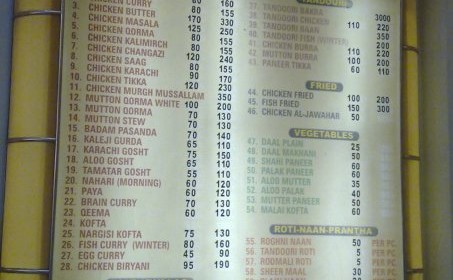Ajmer is in the middle of nowhere. Somewhere along the expanses of the harsh Thar desert, this town stands out like a beacon. It has been doing so for quite some time now. Here lies one of the most important spiritual destinations, if not the most important, one for the millions who follow the holy Quoran.
In Ajmer, lies the tomb of Moinuddin Chishti, one of the most revered Sufi saints in India. Sufism today is different from what it was. It’s birthplace was Baghdad, the capital of Iraq. From there, it came to India. Islam entered India much before, around 700 AD. Sufism arrived around 10th-11th century AD. It stayed, flourished and expanded. Today, Sufiism has made India its spiritual home and is responsible for maintaining equilibrium.
Sufism, simply put, finds the middle path through compassion and discipline. Everything has extremes. Those who preached and spread Sufism were known as Fakirs or Imam, along the lines of a philosopher. In its prominence, Sufism brought calmness to an otherwise volatile world of change. They were mystics, who belonged to a particular order or “Tariqah”, each significantly different from each other. They preached through love, music and equality. This world appreciated this, just like it does today. Back in the day, Sufism started out by offering the one thing people needed the most in the world : Food.
Here’s an interesting observation you might have made in India. All your favorite Mughlai restaurants started out near a mosque or shrine. For example, Dargah Nizamuddin (Delhi), Dargah Haji Ali (Mumbai) and Jama Masjid (Delhi). Why?

Jama means assembly of the masses. When Sufism was in its infancy, they reached out to the poor and needy by offering them shelter and food, free of anything. These shelters were called Khanqahs or Jama’at Khana, all meaning “Gatherings”. These places became refuge for those in need of spiritual guidance, invoked in them by Sufi customs of love and music. This was done through a new kind of music ; Quawwali. Sufi influences can be seen very vividly in music. Great Indian musicians such as A.R Rahman still uphold Sufi principles through their music.
Usually, these places of gathering are near a Mosque. Food is still offered to the poor or anyone who wants it. No one is judged according to religion. Even today, most prominent mosques follow this. Food and shelter is never refused to those who ask for it.
Moinuddin Chisti arrived in India from Persia, modern day Iran. It is said that he was enlightened by Mohammad himself to take upon him this task. His ways of preaching were different. He believed in redressing the misery around him by fulfilling the basic duty of humanity through offering shelter and food to the helpless. His teachings earned him the name “Garib nawaz” (the one who shows kindness to the poor). His teachings were accepted and his following grew. Jalal-u-din-Akbar, the most famous Islamic ruler in India is said to have followed on this spiritual path. This is why his shrine, Dargah Sharif, at Ajmer attracts pilgrims from all over. They come here to pray, seek enlightenment and most of all, ask for Hope.
For in Dargah Sharif, no one is refused. It is said that if a person asks for something with pure intentions, all he needs to do is ask. A symbolic thread is tied. This thread represents whatever you ask for. If the person does what is necessary, this thread will manifest into his deepest wants. Once achieved, people come back to remove this string, implying that their wish came true.
Saints like Moinuddin Chisti preached love, all over the country. Their shrines are known as Dargahs. Nizamuddin in Delhi and Haji Ali in Mumbai, to name a few. They are now places of worship and a shelter for those who need direction. One thing is common in all of them. Food, shelter and hospitality is still never refused.
Through food, shelter and humanity, spirituality is achieved.
Ask and you shall receive..
“Kun Faya Kun”.
(Be, and it is!)
